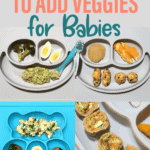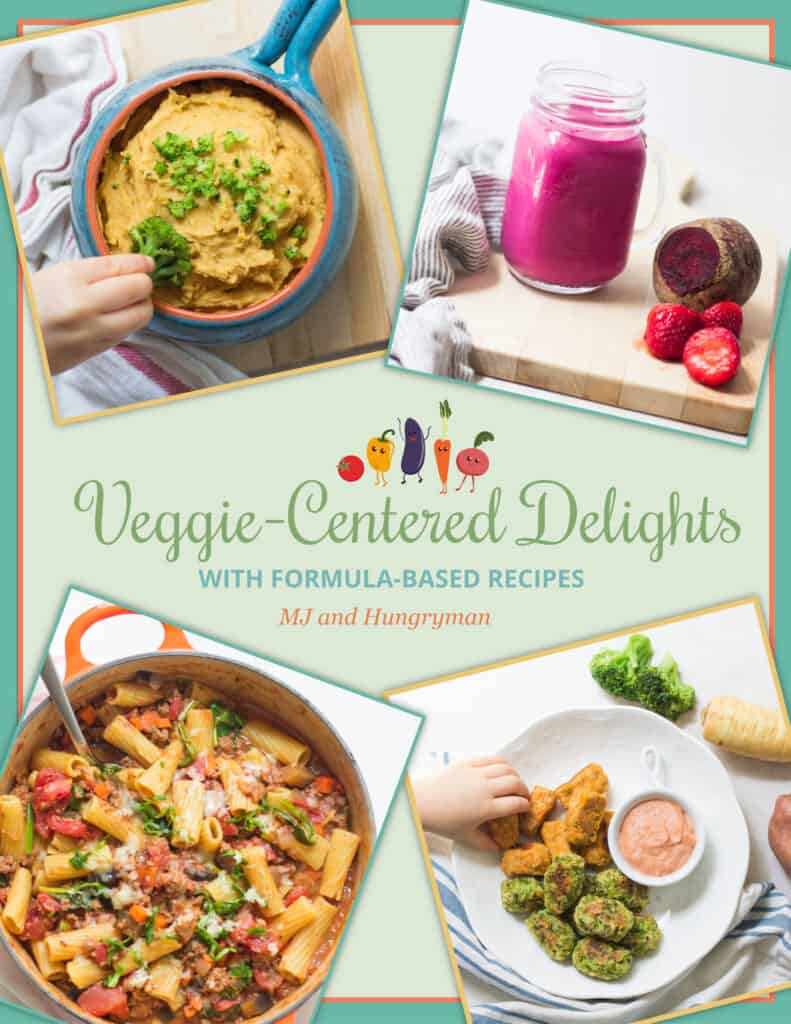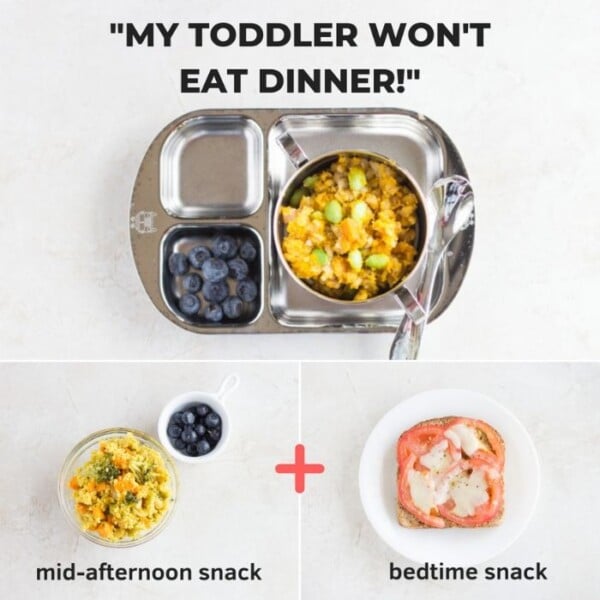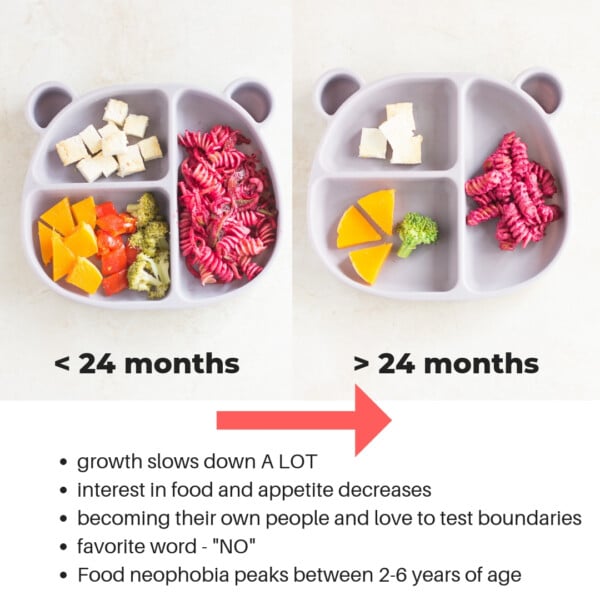This post may contain affiliate links. Please see our disclosure policy for more details.
Here are some quick, easy, and approachable ideas and recipes to add vegetables for babies six months and up!
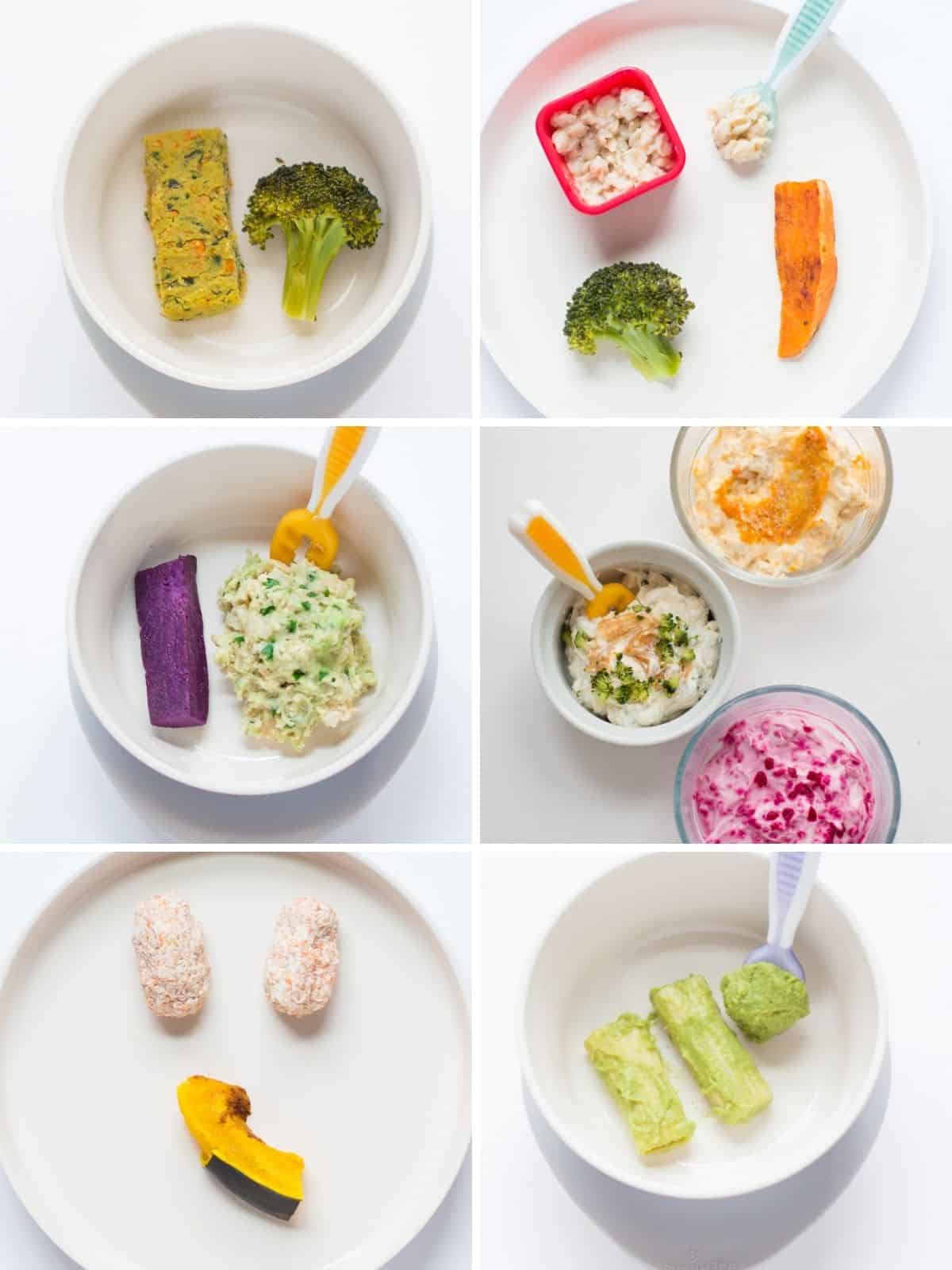
Table of Contents
Best Vegetables for Babies
All vegetables are great sources of vitamins, minerals, and fiber, and you should aim to introduce a variety early and often.
But if I had to provide a list, here are the top vegetables:
Beets
Bell peppers
Broccoli
Carrots
Green peas
Sweet potatoes
Winter squash (e.g. butternut squash, acorn squash)
While they don’t contain a whole lot compared to meat or plant-based iron-rich foods, these vegetables contain the highest amount:
Leafy greens (e.g. spinach, kale, collard greens)
Broccoli
Brussels sprouts
Cabbage
Green peas
Mushrooms
Potatoes (mostly concentrated in the skins)
Here are the TOP Iron Rich Foods for Babies
Absolutely! They are budget-friendly and convenient bc you don’t have to wash, peel, chop, etc., and won’t go bad before you can eat them.
They are also flash frozen within hours of being picked and thus can retain higher levels of some nutrients than fresh ones.
Some recommend introducing babies to vegetables first since babies are innately drawn to sweet flavors. Otherwise, they will reject vegetables. Others say that offering well accepted foods, like fruits, first will help in the adjustment to solids better.
There isn’t evidence to show that your baby will not like vegetables if you start with fruits. Both are nutritious and provide nutrients that our babies need to grow.
So to answer this question, you don’t have to introduce foods in any particular order.
Here’s a deep dive on this topic of fruits vs. vegetables for babies.
Don’t Feel Overwhelmed!
Introducing babies to a wide variety of flavors and textured foods is important in helping shape their food preferences and eating habits.
For this post, I’m focusing on vegetables because it’s one of, if not, the main food groups that parents struggle with getting their child to eat.
Exposing them to variety from early on can really help increase acceptance and likeability for them as they continue to grow.
This doesn’t mean that you have to introduce a different vegetable every single day or at every meal! I’m sharing my approach in hopes that it will help make this important task less daunting and absolutely achievable!
How to Cook Vegetables for Babies
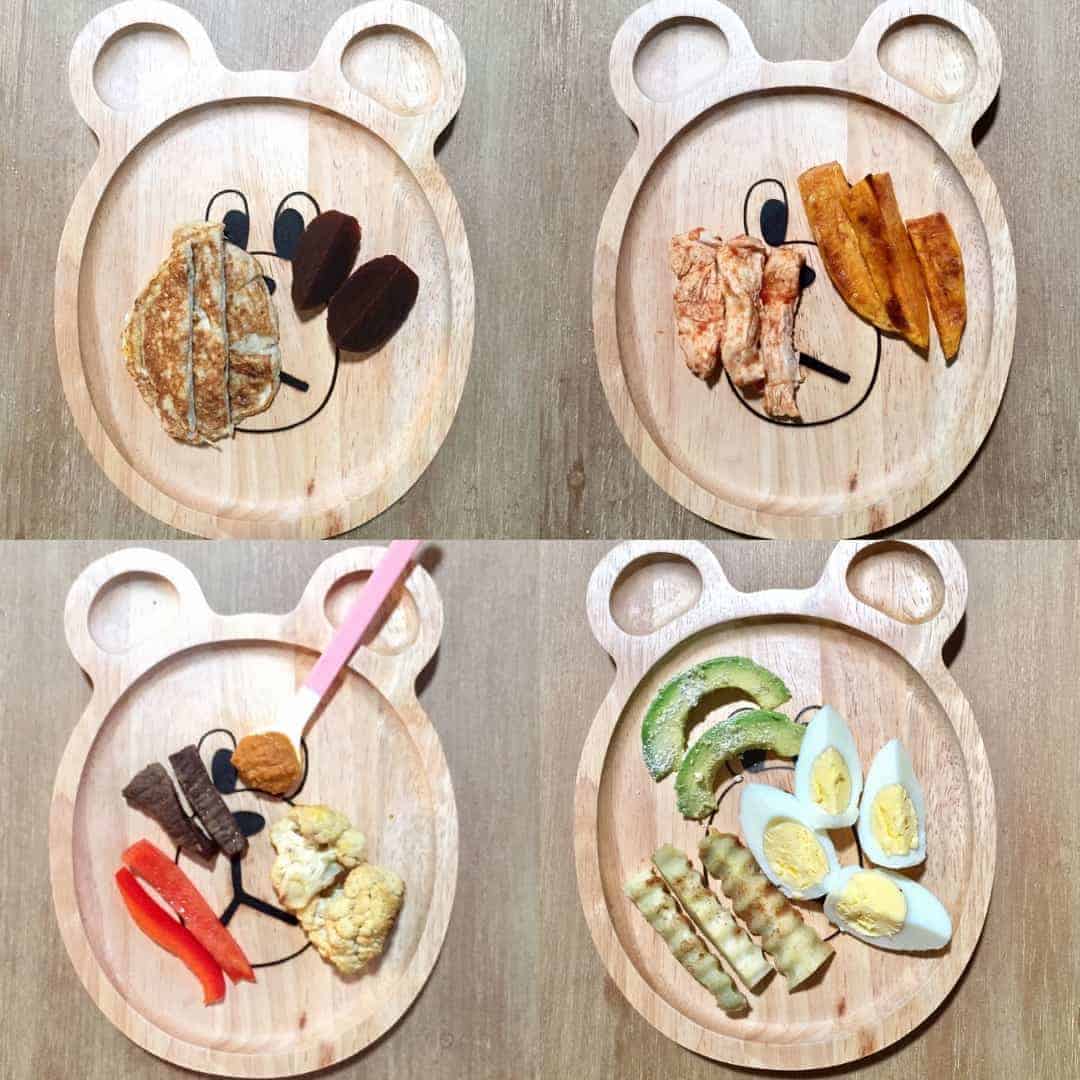
When we first started our baby led weaning journey, I simply offered soft-cooked, finger-shaped vegetables seasoned with various herbs/spices.
I remember seeing all these pictures of babies being served mini veggie-loaded frittata, muffins, pancakes, and all kinds of “fancy” concoctions, and I just didn’t have the time or the mental energy to do that at the time.
But steaming, roasting, or steam roasting vegetables so that they’re easily smooshable with my fingers and finger-shaped (about 1.5 times as long as baby’s fist)….Now THAT I could do.
Check out my “How To Series” for guidance on how to cook a specific vegetable.
If you’re anything like me, take baby steps! And as you become more comfortable and efficient, you will gradually build the foundational habits necessary. After all, we’re going to be feeding our kids for a VERY long time.
If you need more specific guidance,
Meal Prep Suggestions
Once I started to find my footing, slowly got over the fear of choking, learned to trust my baby’s innate ability to work through foods, among many other things, I began to incorporate the vegetables in different ways.
Here’s my workflow that continues to serve me well:
- Meal Plan for the week. I don’t plan every single meal and snack. Instead, I come up with 2 main meals and 2 baked goods that I commit to making. For the rest of the meals, I utilize leftovers and whatever pantry meals I can whip up easily (think quesadillas, fried rice, stir-fry, etc.).
- Go grocery shopping.
- Cook a large batch of vegetables to enjoy throughout the week. I normally do this once every 3-4 days or so.
- Use those same vegetables in various ways to invite variety. I walk you through how to do this in my “Subtract, Multiply, Diversity” FREE 5-day series mentioned above. Since they’re already cooked, it doesn’t take much additional time and effort to throw them into snacks/meals.
Vegetable Recipes for Babies
Here are some examples from the actual meals I served to my baby C. I say recipes but a lot of them are ideas and inspirations that you can easily incorporate into your baby (and toddler’s) diet.
Not only will you be exposing your baby to more variety but will also be helping improve fine-motor skills and hand-eye coordination.
Mashed vegetables
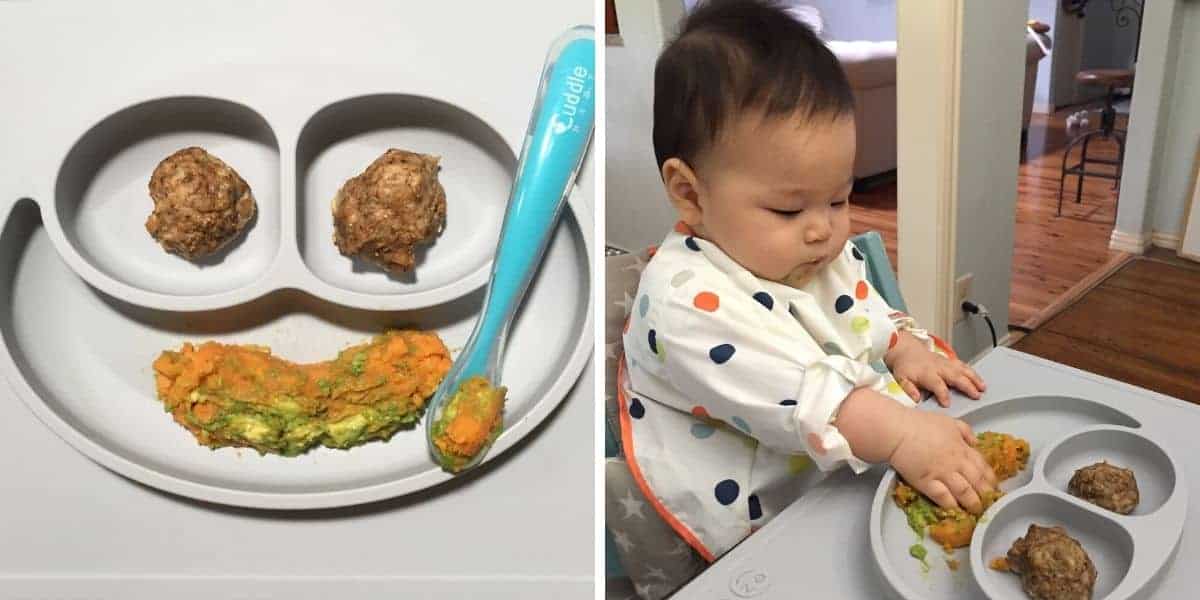
Cook the vegetables and simply mash with a fork. You can serve alone or mixed in with other foods, like avocado, minced meat, oatmeal, yogurt, ground nuts or seeds, beans, lentils, fruits, or other vegetables!
Let them go at it with their hands. Getting messy is an important part of self-feeding. But bless your heart. Things will be hairy for a while. You have been warned ;).
Minced/Chopped vegetables
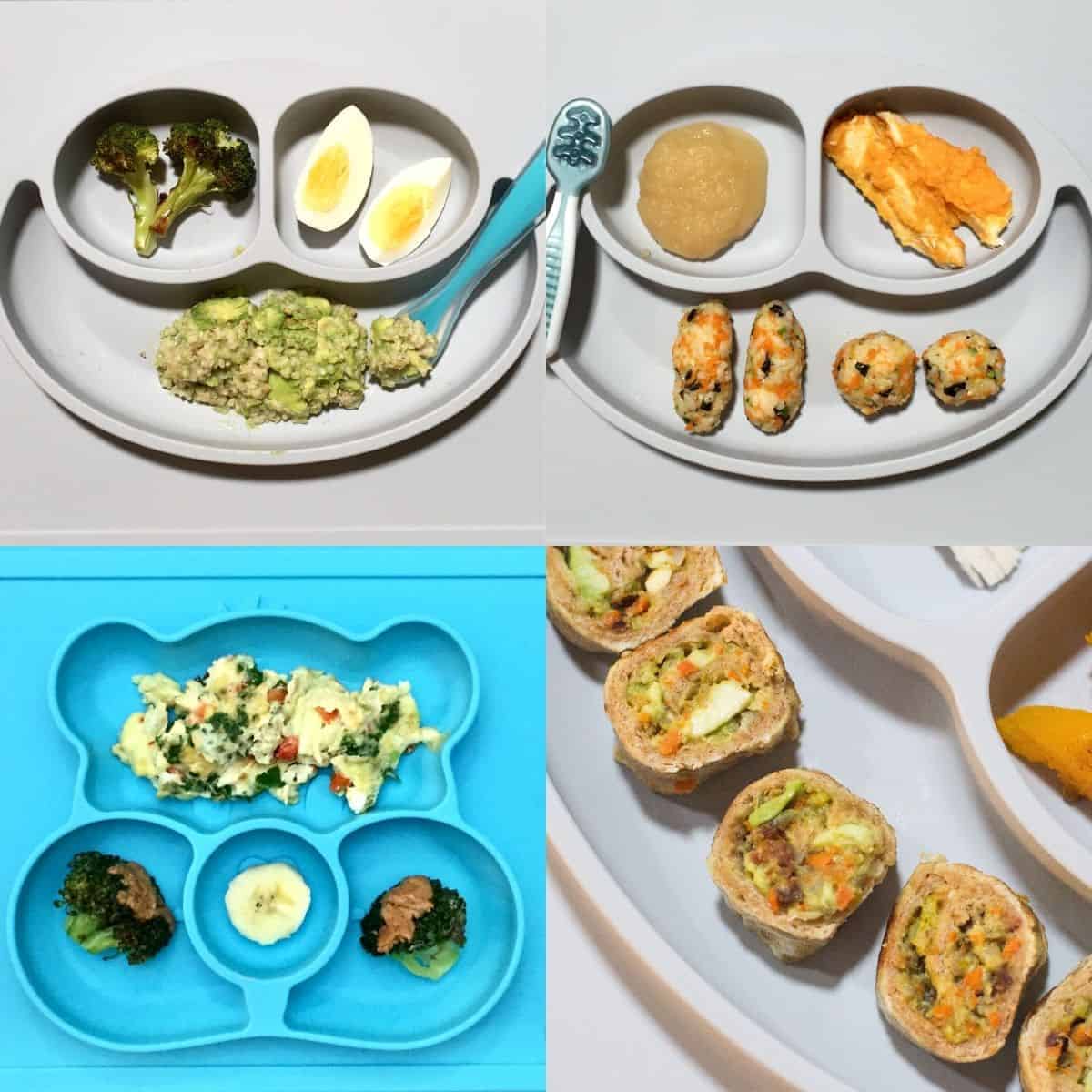
Finely chop the cooked vegetables and add to:
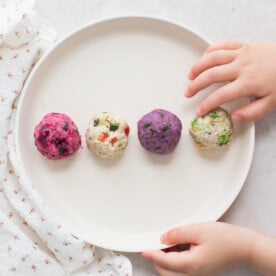
Homemade Baby Oatmeal
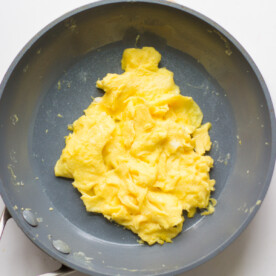
Soft Scrambled Eggs for Baby
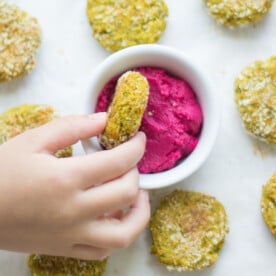
Baked Veggie Nuggets
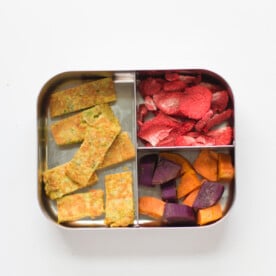
Vegetable Omelette

Savory French toast
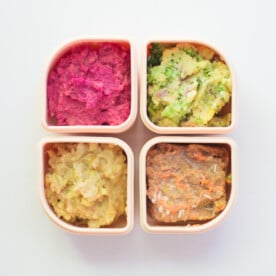
Lentils for babies
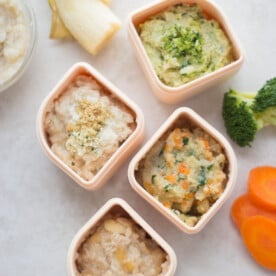
Easy Quinoa Baby Cereal (4 Ways)
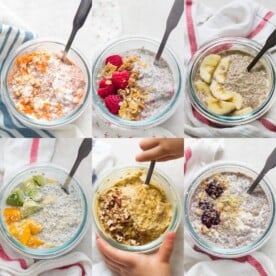
Single Serve Chia Puddings for Babies and Kids

Vegetable Waffles with Peanut Butter
Vegetable dips and sauces
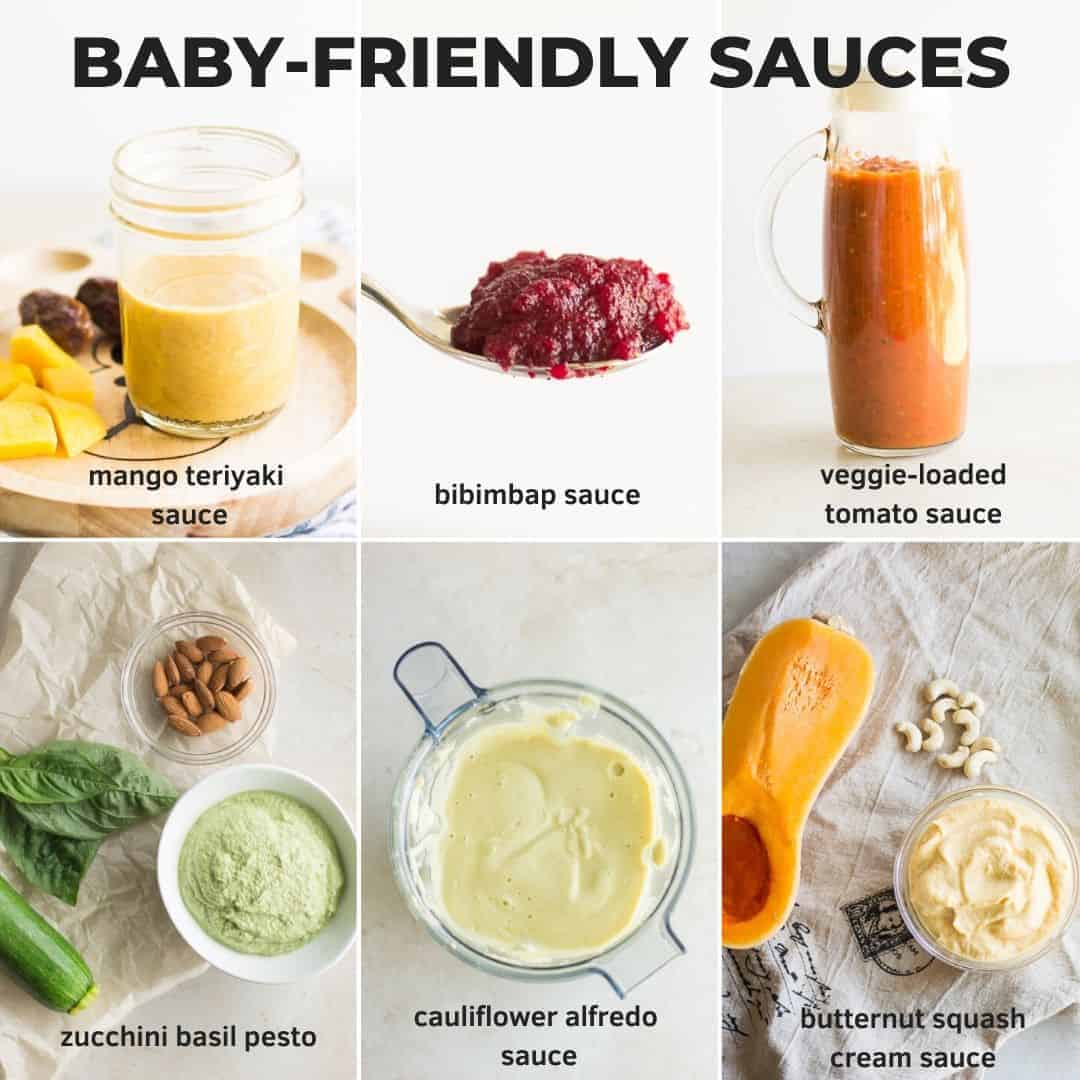
Serve as is and have your baby scoop with their hands or preload onto a spoon and hand it to them (really love these). You can also pour over pasta, grains, bread, or cooked vegetables!
Here are some recipes to try:

Zucchini Pesto with Almonds

Broccoli Hummus Dip

Beetroot Pesto Pasta Sauce

Creamy Greek Yogurt Black Bean Dip

Creamy Roasted Cauliflower Dip

Broccoli Pesto Pasta

Beet Hummus for Babies
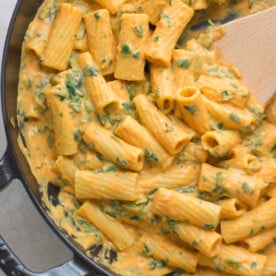
Creamy Sweet Potato Sauce

Pumpkin Seed Spinach Hummus

Beetroot Dip with chickpeas
Veggie-loaded baked goods
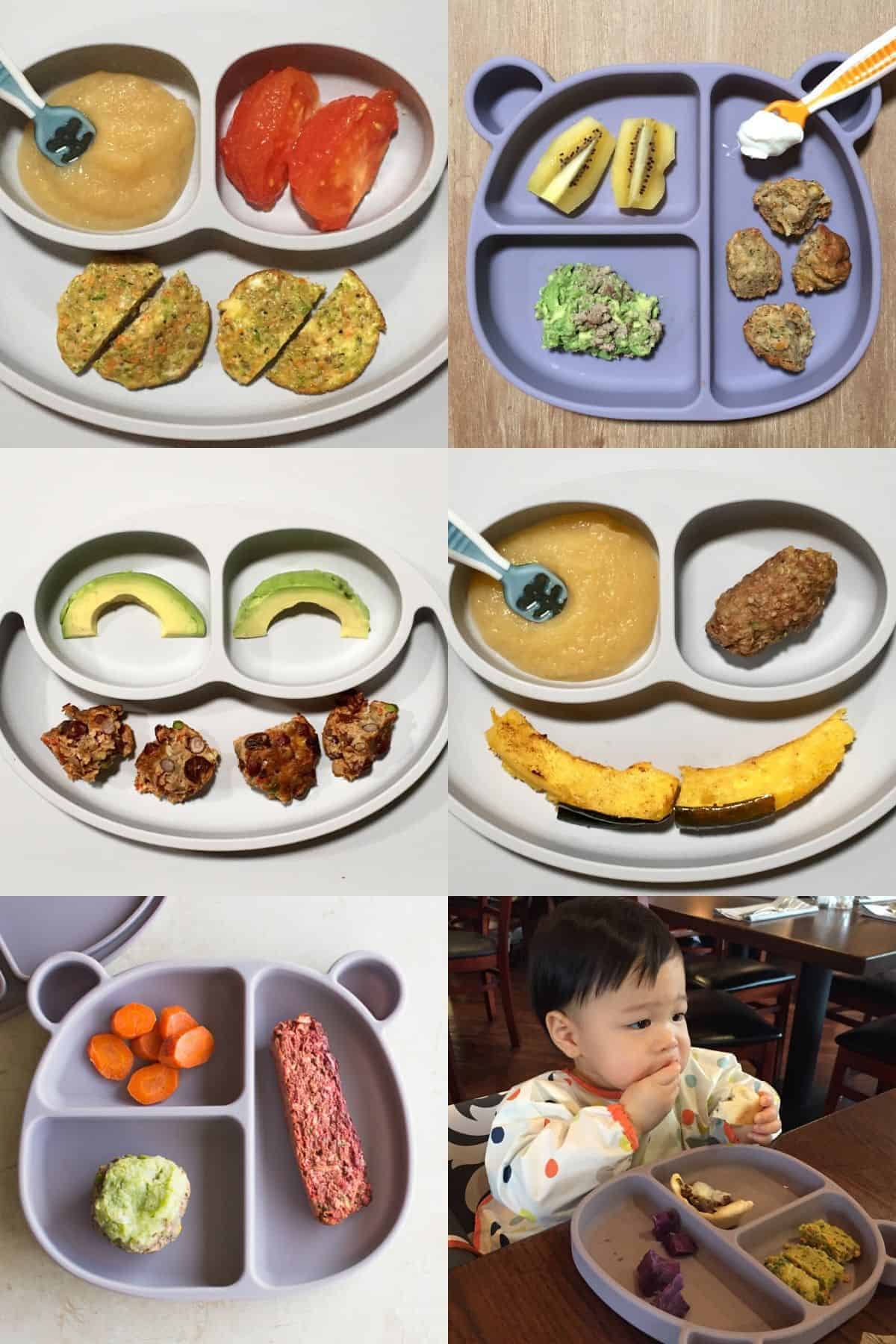
Muffins, frittatas, meatballs, quiche, breads, cookies…I definitely did a TON of baking. I have a feeling you will too.
Here are some readers’ favorites:
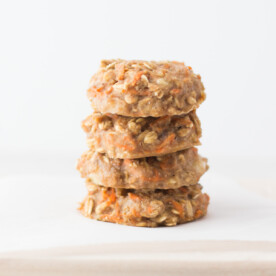
3 Ingredient Baby Cookies
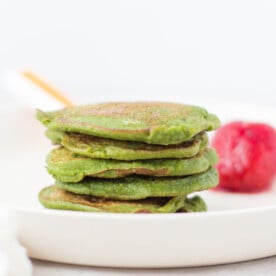
Spinach Pancakes
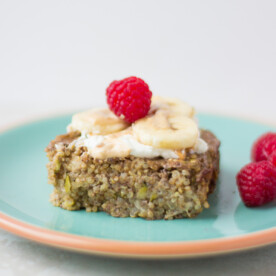
Baked Breakfast Quinoa with Zucchini

Carrot Zucchini Muffins (with avocado)
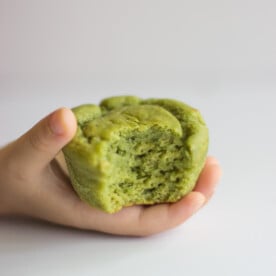
Moist Spinach Muffins

Vegan vegetable quinoa muffins

Healthy Carrot Oatmeal Muffins
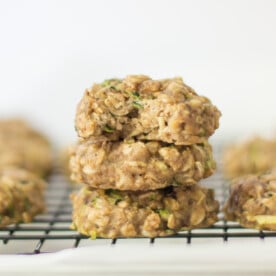
Healthy Zucchini Oatmeal Cookies

Mini crustless quiche

Kid-friendly Turkey Beet Meatballs
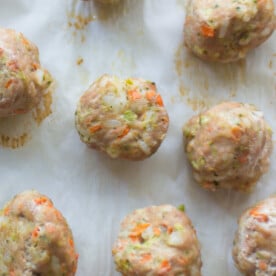
Turkey Meatballs with rice

Baked Quinoa and Mushroom Beef Meatballs
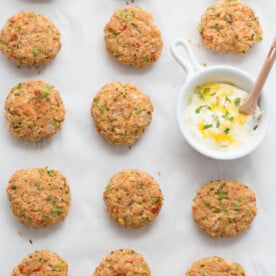
Mini Baked Canned Salmon Patties
Baby Led Weaning Family Meals
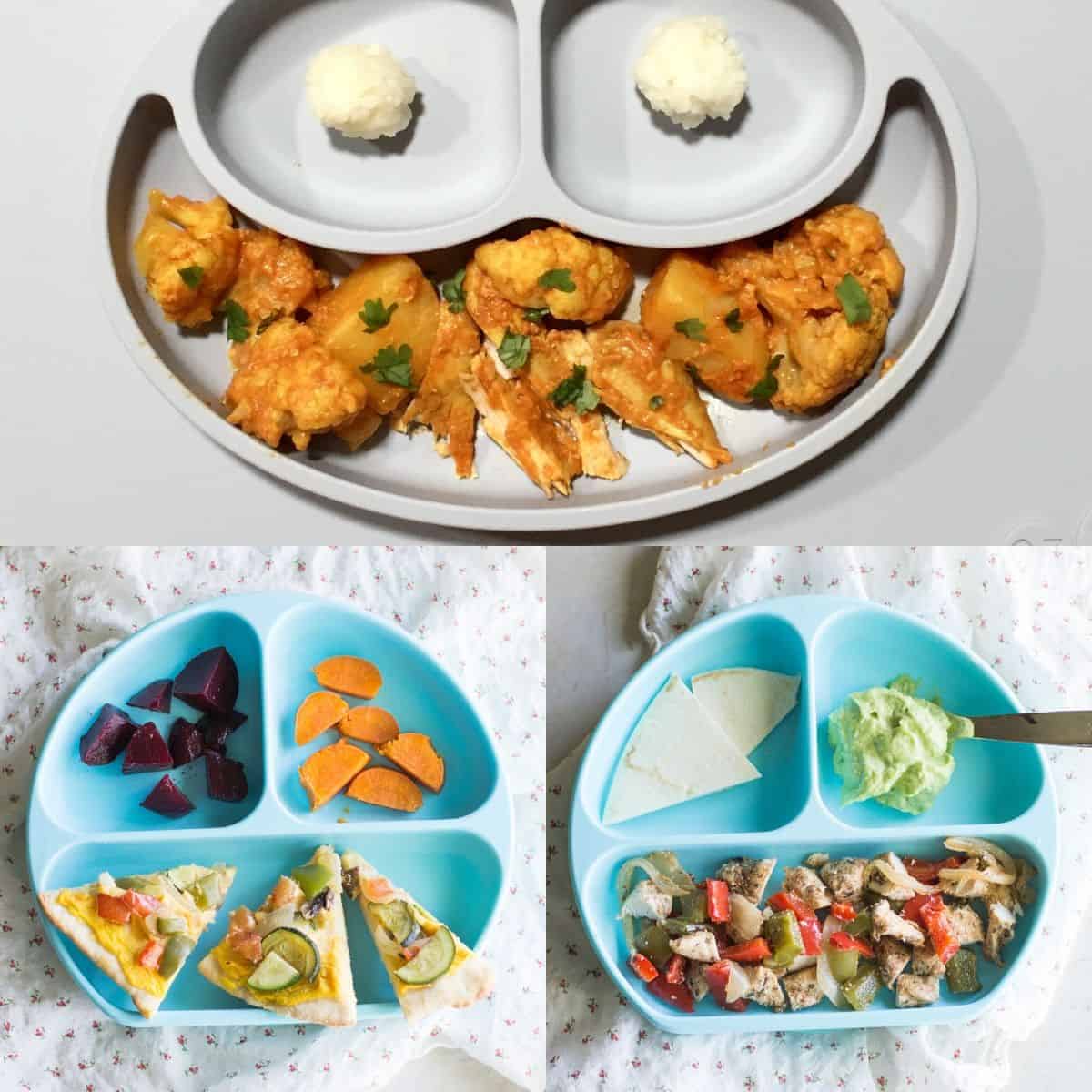
One meal for the whole family! That’s the goal! Depending on your baby’s age and developmental skills, you’ll need to make some adjustments.
First, instead of cooking with salt, flavor with herbs/spices. Look for low- or no-salt-added products, like canned tomatoes, beans, stock, etc. Limit packaged foods. Also limit sugar.
Slow cooker or pressure cooker meals are so great! Everything comes out soft and moist and super flavorful with minimal effort.
Deconstructed tacos/sandwiches. Serve all the components, including vegetables, separately.
Casseroles. They’re sticky and easy for babies to scoop with their hands and also a great way to pack in so many vegetables.
One Pot Meals. My e-cookbook One Pot Meals is filled with baby-friendly family meals with no added salt and sugar but plenty flavorful for the entire family to enjoy.
Here are 30+ Easy Dinner Recipes for babies and toddlers
Formula-Based Cooking
Now there are so many wonderful recipes out there that you can try. But what if I told you that you could easily whip up any veggie-loaded baby-friendly foods with the ingredients you have on hand without relying so heavily on recipes?
Enter formula-based cooking.
What does this approach to cooking accomplish?
- Saves you time
- Helps you learn to use up everything in your fridge and pantry in yummy and creative ways
- Reduces food waste
- Less reliance on pre-packaged items
- Teaches you to easily build flavor with spices, oils, vinegars, etc. I promise this skill will come the more you experiment with these flavoring agents.
- Stimulates creativity
- Boosts confidence
- Makes offering variety fun and totally doable!
In my e-cookbook, “Veggie-Centered Delights,” you’ll find basic formulas for whipping up veggie-loaded:
- Bean Dips
- Yogurt Dips
- Smoothies
- Tots/nuggets
- One Pot Pasta
I provide you with specific serving sizes/quantities for all the individual components as well as recipes for each category to help get you started! But you don’t need to follow it to a T. Once you get comfortable, you can add a little more of this or a little less of that depending on your preference. These formulas are very flexible and forgiving.

